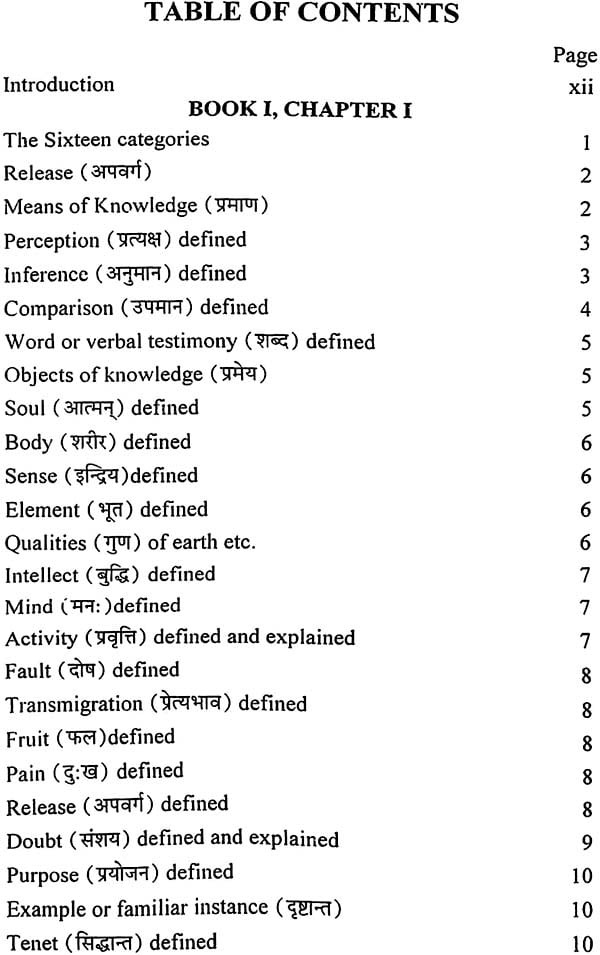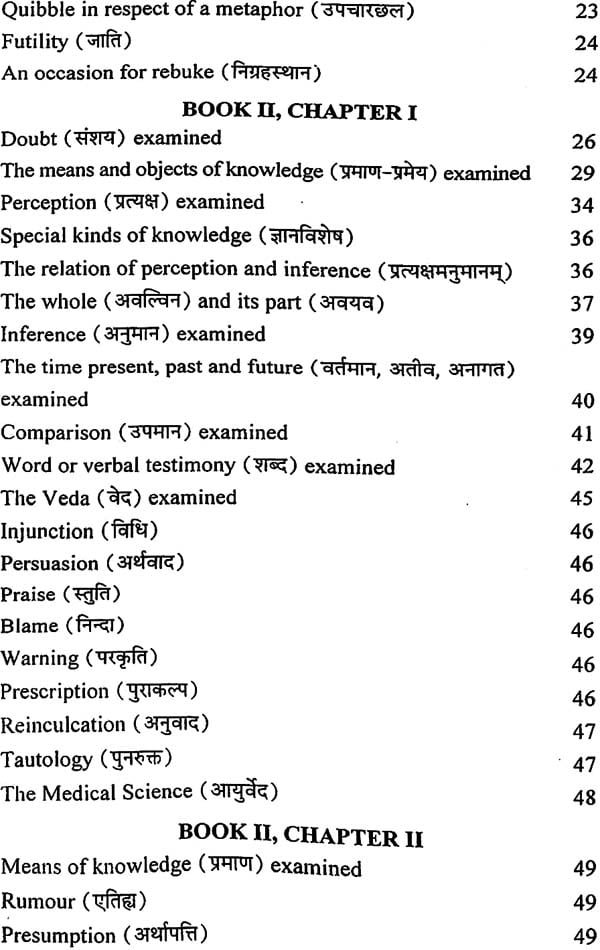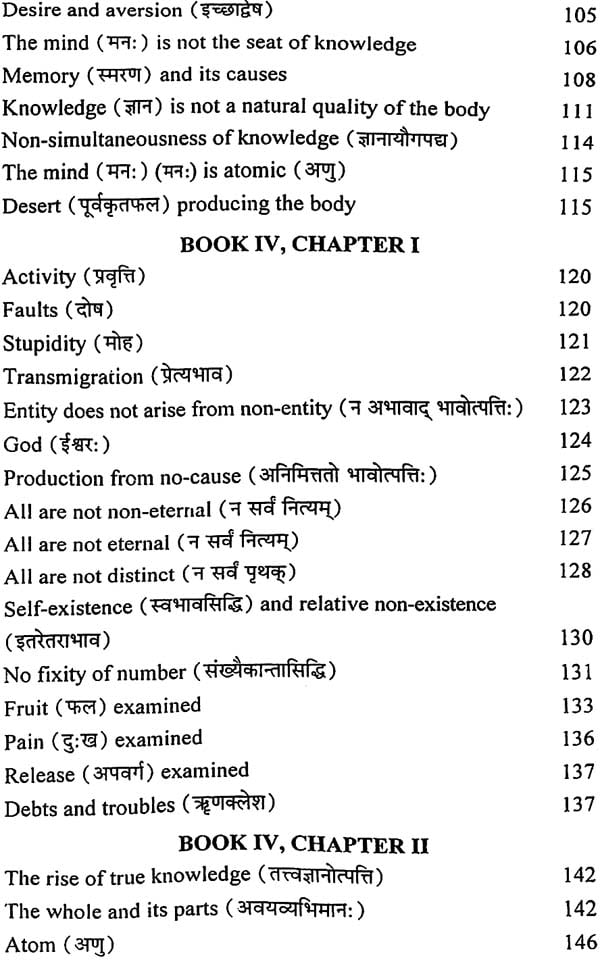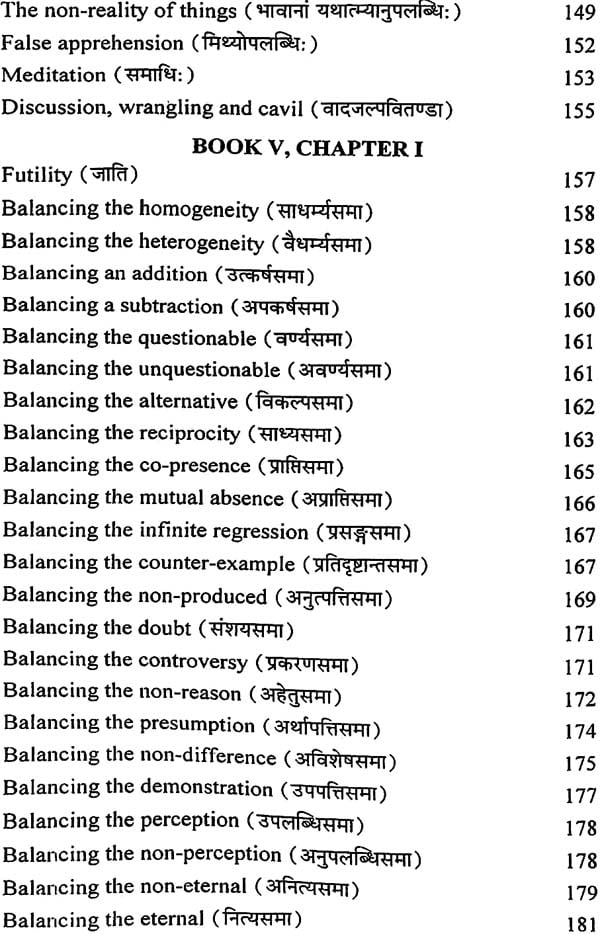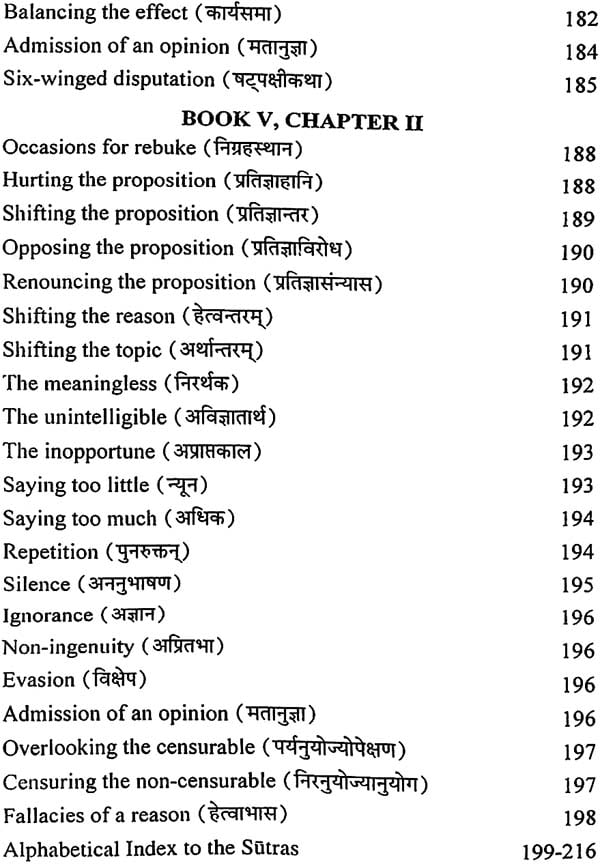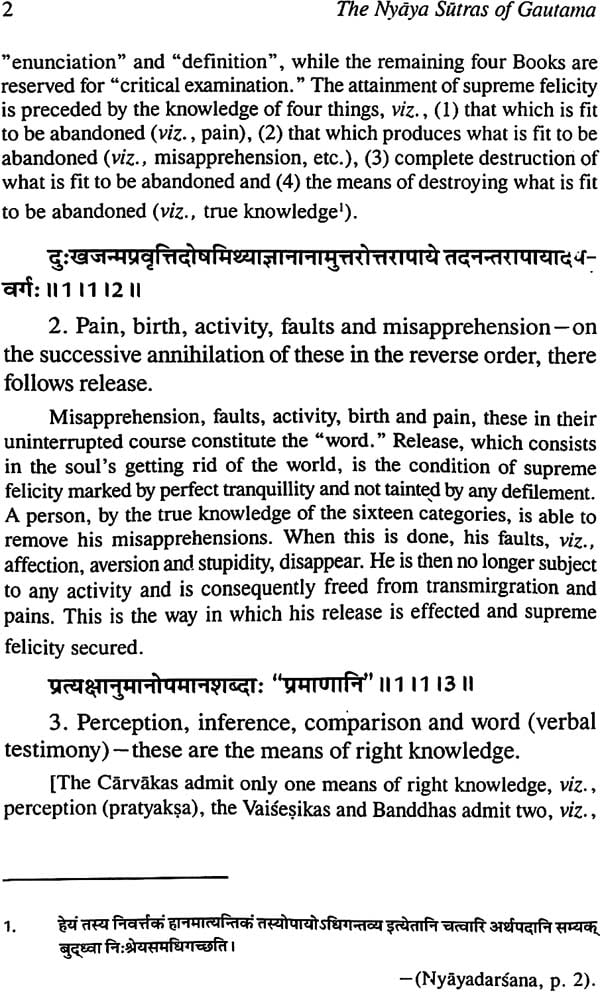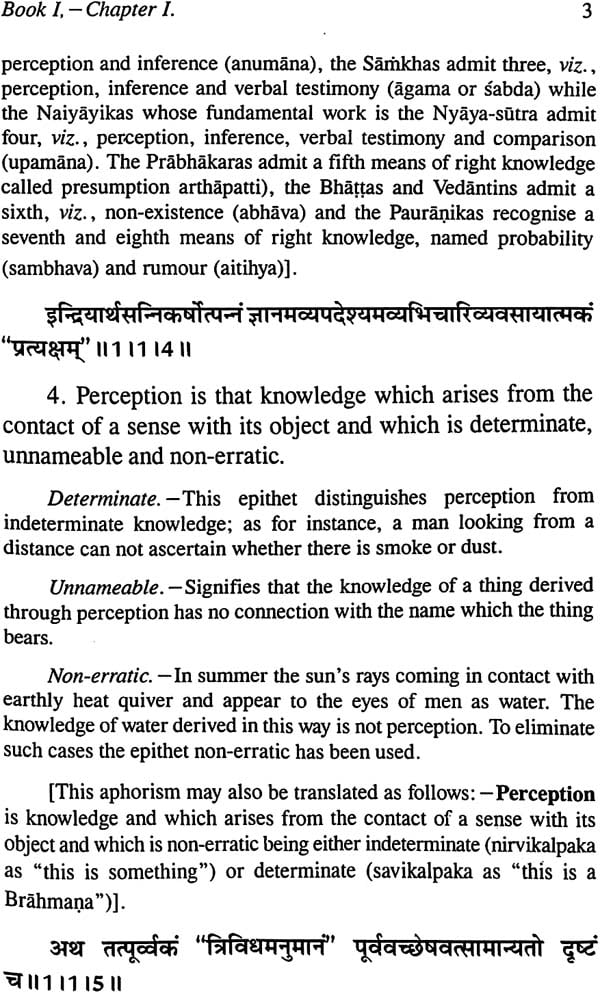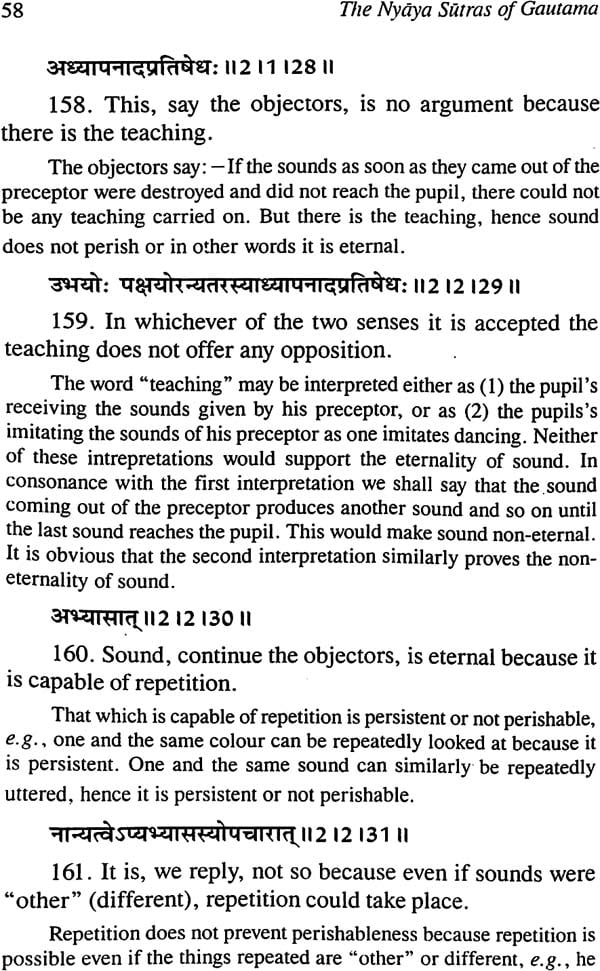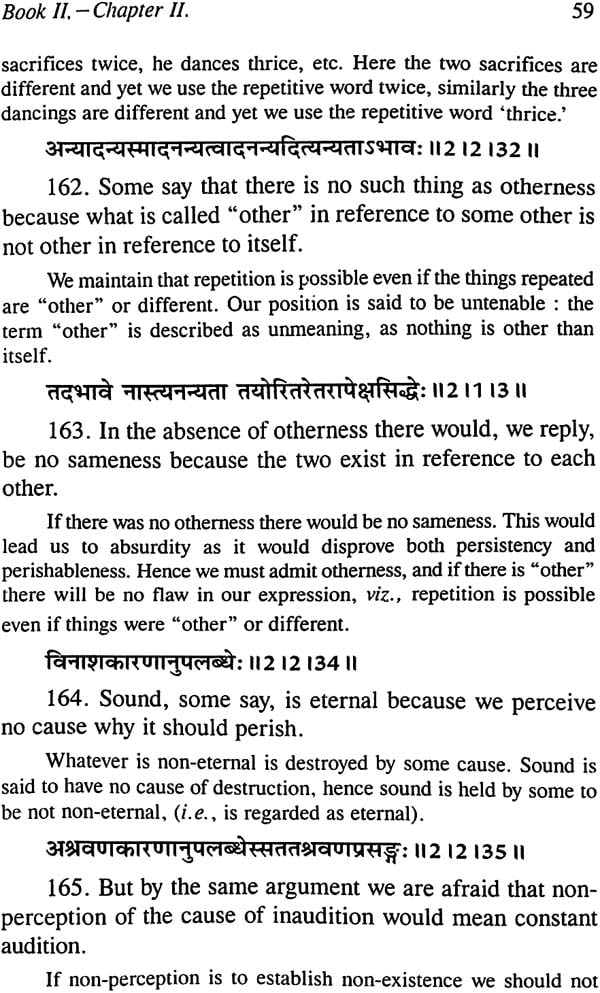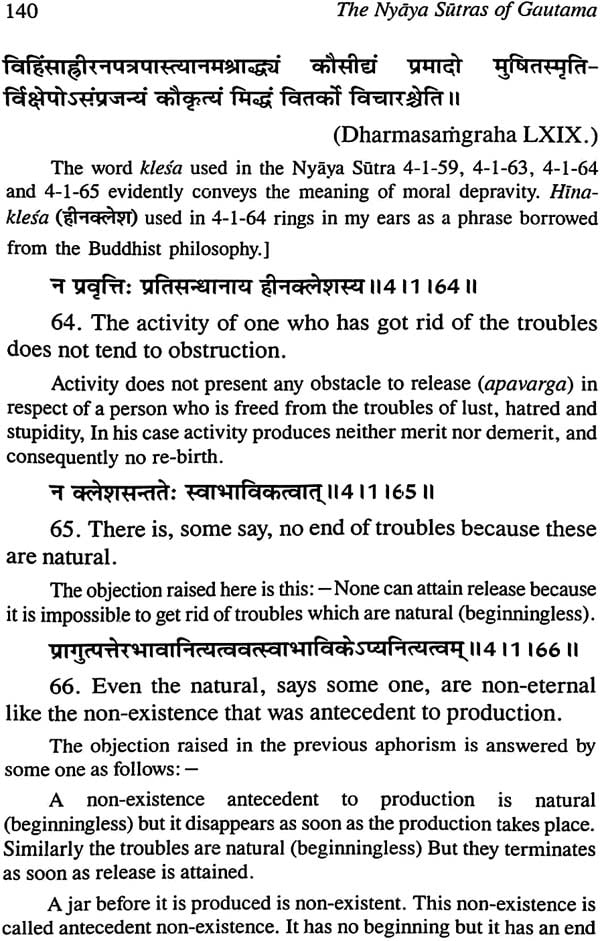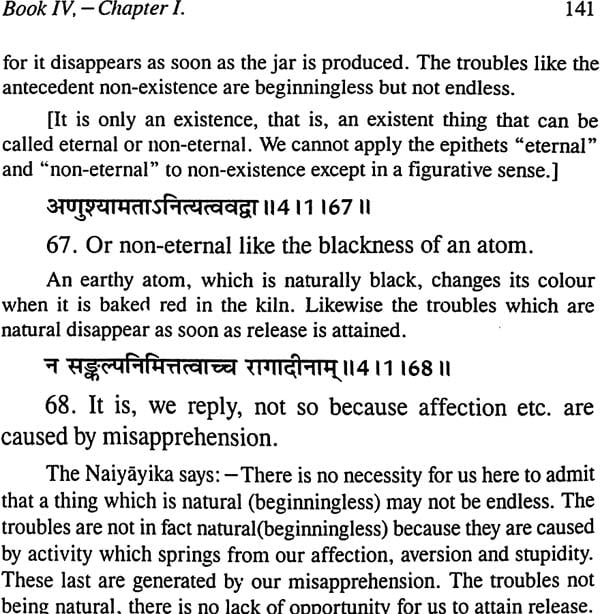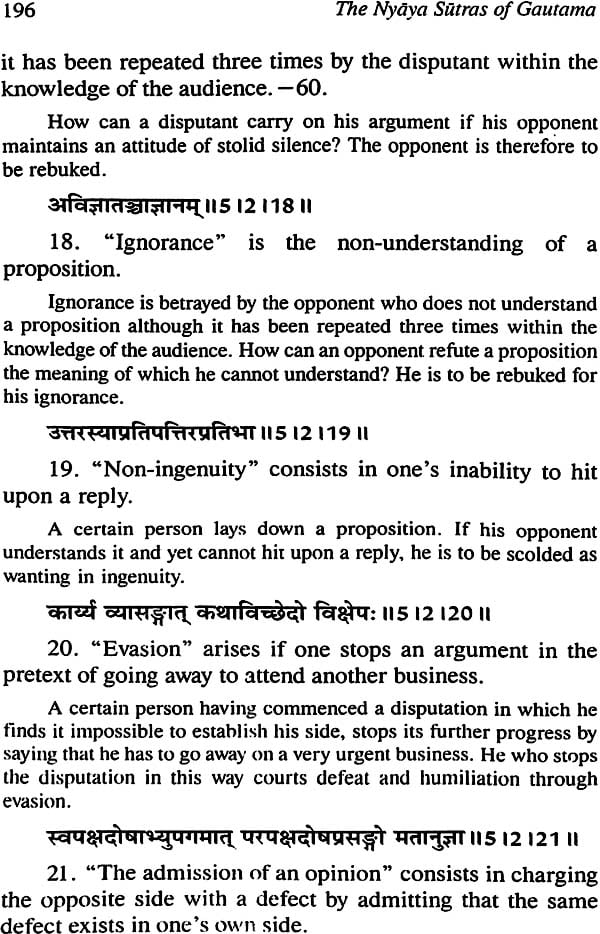
The Nyaya Sutras of Gautama (Original Text, English Translation and Commentary)
Book Specification
| Item Code: | NAP198 |
| Author: | Satis Chandra Vidyabhusana and Dr. Sukhram |
| Publisher: | Parimal Publication Pvt. Ltd. |
| Language: | English |
| Edition: | 2021 |
| ISBN: | 9788171106295 |
| Pages: | 246 |
| Cover: | Hardcover |
| Other Details | 9.0 inch X 6.0 inch |
| Weight | 450 gm |
Book Description
The Nyaya Sutras is an ancient Indian Sanskrit text composed by Aksapada Gautama, and the foundational text of the Nyaya school of Hindu philosophy. The text consists of five books, with two chapters in each book, with a cumulative total of 528 aphoristic Sutras, about rules of reason, logic, epistemology and metaphysics.
The Nyaya Sutras is a Hindu text, notable for focusing on knowledge and logic, and making no mention of Vedic rituals. The first book is structured as a general introduction and table of contents of sixteen categories of knowledge. Book two is about pramana (epistemology), book three is about prameya or the objects of knowledge, and the text discusses the nature of knowledge in remaining books. It set the foundation for Nyaya tradition of the empirical theory of validity and truth, opposing uncritical appeals to intuition or scriptural authority.
The Nyaya Sutras cover a wide range of topics, including Tarka-Vidya, the science of debate or Vada-Vidya , the science of discussion. The Nyaya Sutras are related to but extend the Vaisesika epistemological and metaphysical system.
The present book contains original text of Nyaya Sutras of Gautama along with an English translation & commentary by M.M. Satisa Candra Vidyabhusana. The book also includes an alphabetical index of Sutras at the end for ready reference of the readers.
1.Gautama The founder of Nyaya Philosophy
The world `Nyaya explained'- Panini, the celebrated Sanskrit grammarian, who is supposed to have flourished about 350 derives the word "Nydya"2 from the root "i" which conveys the same meaning as ''gain" - to go. "Nyaya" as signifying logic is therefore etymologically indentical with ‘‘nigama" the conclusion of a syllogism. Logic is desiguated in Sanskrit not only by the word "Nyaya" but also by various, other words which indiate diverse aspect of the science. For instances, it is called "Hetu-vidya"-) or "Hetu-Sastra" the science of causes, -Anviksiki° the science of inquiry, "Pramdna-sastra" the science of correct knowledge, "Tattva-Sastra- the science of categories "Tarka-vidya" the science of reasoning, "Vadartha" , the science of discussion and "Phakkika-Sastra" the science of sophism. Nyaya-sutra is the earliest work extent on Nyaya Philosophy.
The Founder of Nyaya called Gautama, Gautama Aksapada or Dirghatapas.
The Naya of logic is said to have been founded by a sage named Gautama. He is also known as Gautama, Aksapada and Dirghatapas. The names Gotama and Gautama point to the family to which he belonged while the names Aksapada and Dirghatapas refer respectively to his meditative habit and practice of ling penance.
The family of Gotama
In The Rgveda samhita as well as the Satapatha-Brahmana of the white Yajurveda we find mention of one Gotama who was son of Rahugana and priest of the Royal Family of Kurusrmjaya for whose victory in battle he prayed to Indra. Nodhah son of Gotama, was also called Gotama who composed several new hymns in honour of India. The sages sprung from the family of Gotama are designated Gotamasah who were very intelligent; and Agni, pleased with their adoration, gave them cattle and rice in abundance. It is related that Gotama, once pinched with thirst, prayed for water of the Marut-Gods, who out of mercy, placed a well before him transplanted from elsewhere. The water grushing out copiously from the well nt only quenched his thirst but formed inself into a river, the source of which was the seat of the original well.
The teachers called Gautama.
In The Rgveda-samhita the descendants of Gotama as already noticed are also called Gotama while in later Vedic literature they are called Gautama. The Vamsa-Brahmana of the Samaveda mentions four members of Gotama Family among the teachers who transmitted that Veda to poserrity, viz., Radha-Gautama, and Gatr-Gautama, Sumanta-babhrava-Gautama and Samkara-Gautam, and the Chandogya Upanishad of the same Veda mentions another teacher named HAridrumata-Gautama who was approached by Satya-Kama-Savala to be his teacher. The Gobhita Grhya Sutra of the Samaveda cites the opinion of a Gautama who held that during the winter season there should be three oblations offered to the dead ancestors. Another Gautama was the author of the Pitrmedha Sutra which perhaps belongs to the Samaveda. The Brhadaranyaka of the white Yajurveda mention a teacher named Gautama, while in the Kathopanisad of the Black Yajurveda the sage Naciketas who conversed with Yama on the mystery of life, is called Gautama which evidently is a generic name as his father is also called Gautama in the same work. A Gautama is mentioned as a teacher in the Kausika sutra of the Atharvaveda while to another Gautama is attributed the authorship of the Gautama Dharma sutra as authoritative work on the sacred law.
We need not take any notice of one Gautama who, at the bidding of his mother as stated in the Mahabharata cast into the Ganges his old and blind father Dirghatamas who was however miraculously saved.
